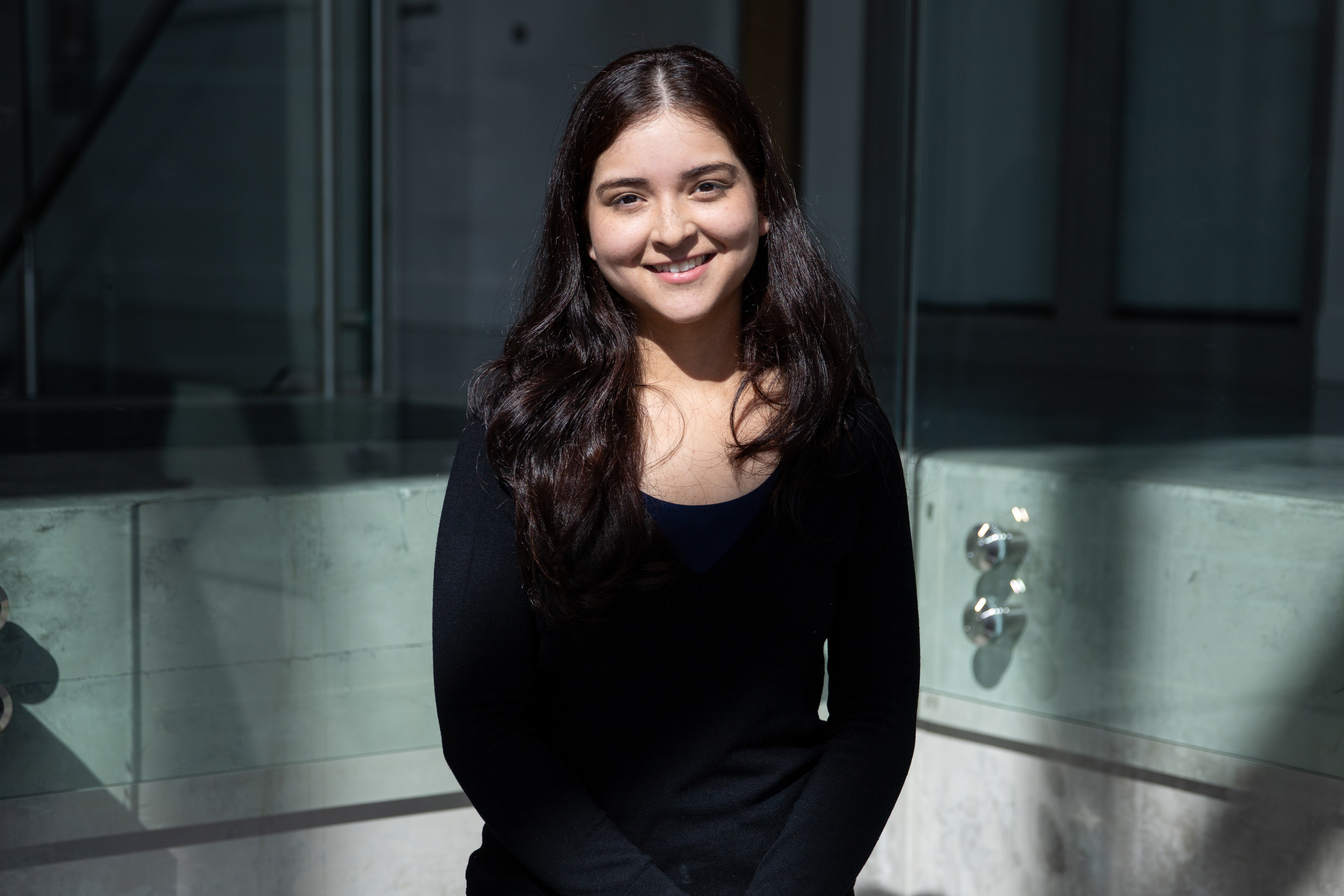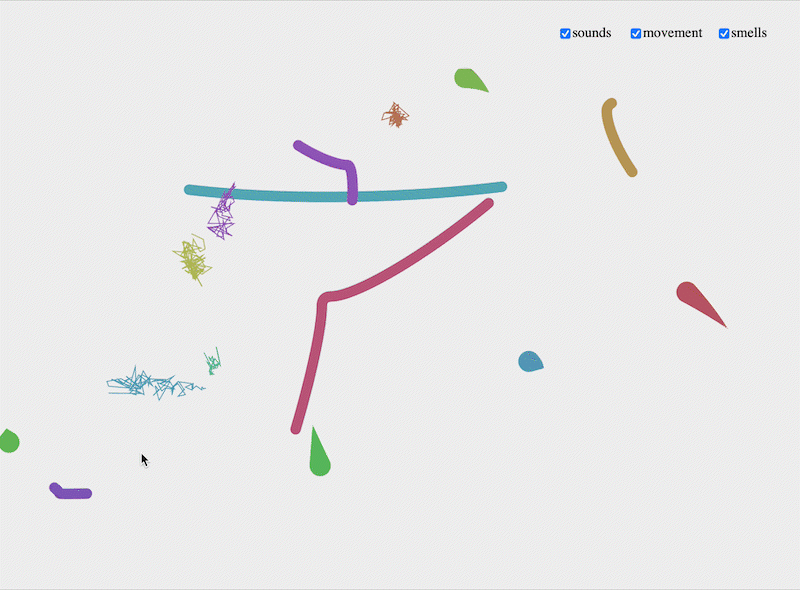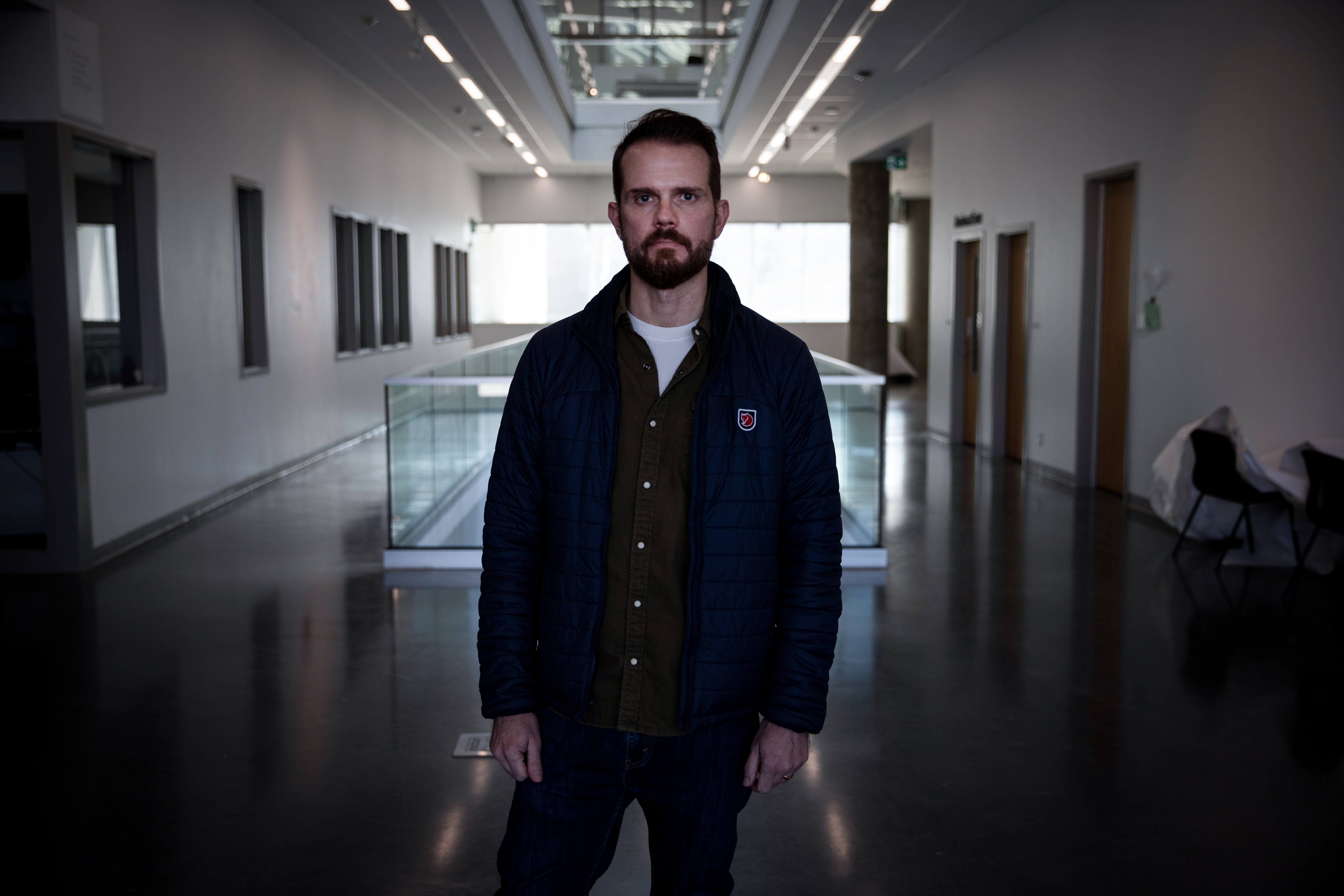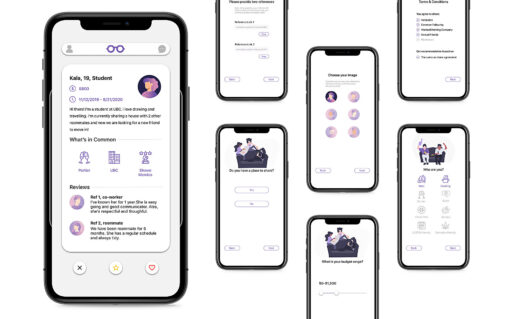Nodin Cutfeet’s ‘Waniskâw’ Earns Two UX Awards
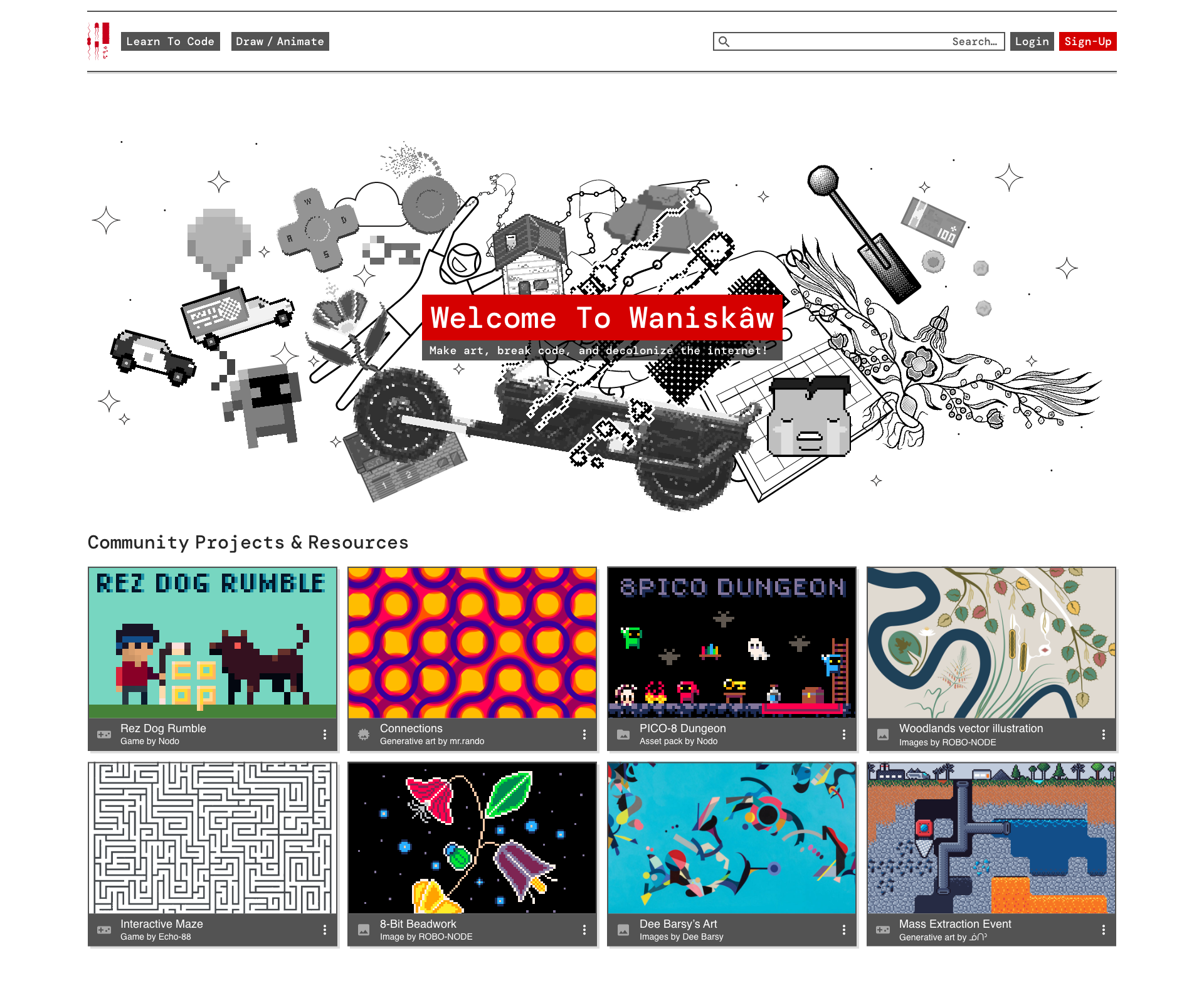
The homepage of Nodin Cutfeet's Waniskâw platform. (Image courtesy Nodin Cutfeet)
Posted on
The designer and educator created the platform to encourage programming and art-making skills among rural Indigenous youth.
Designer Nodin Cutfeet (BDes 2021) is the recipient of a pair of Vancouver UX Awards for his learning platform that teaches Indigenous youth how to write code and create digital art.
Titled Waniskâw, the platform won an award for Best Non-Profit Experience and the overall award for Best UX.
“It was pretty shocking,” Nodin says of hearing his name called out at the ceremony. “I was like, is this really happening? But it was great to meet all the people from the UX community. Everyone was really welcoming.”
Also in attendance were students from the Emily Carr University Interaction Design (UX) program including Shriya Maru, who won an award for her project, Our Dinner Table.
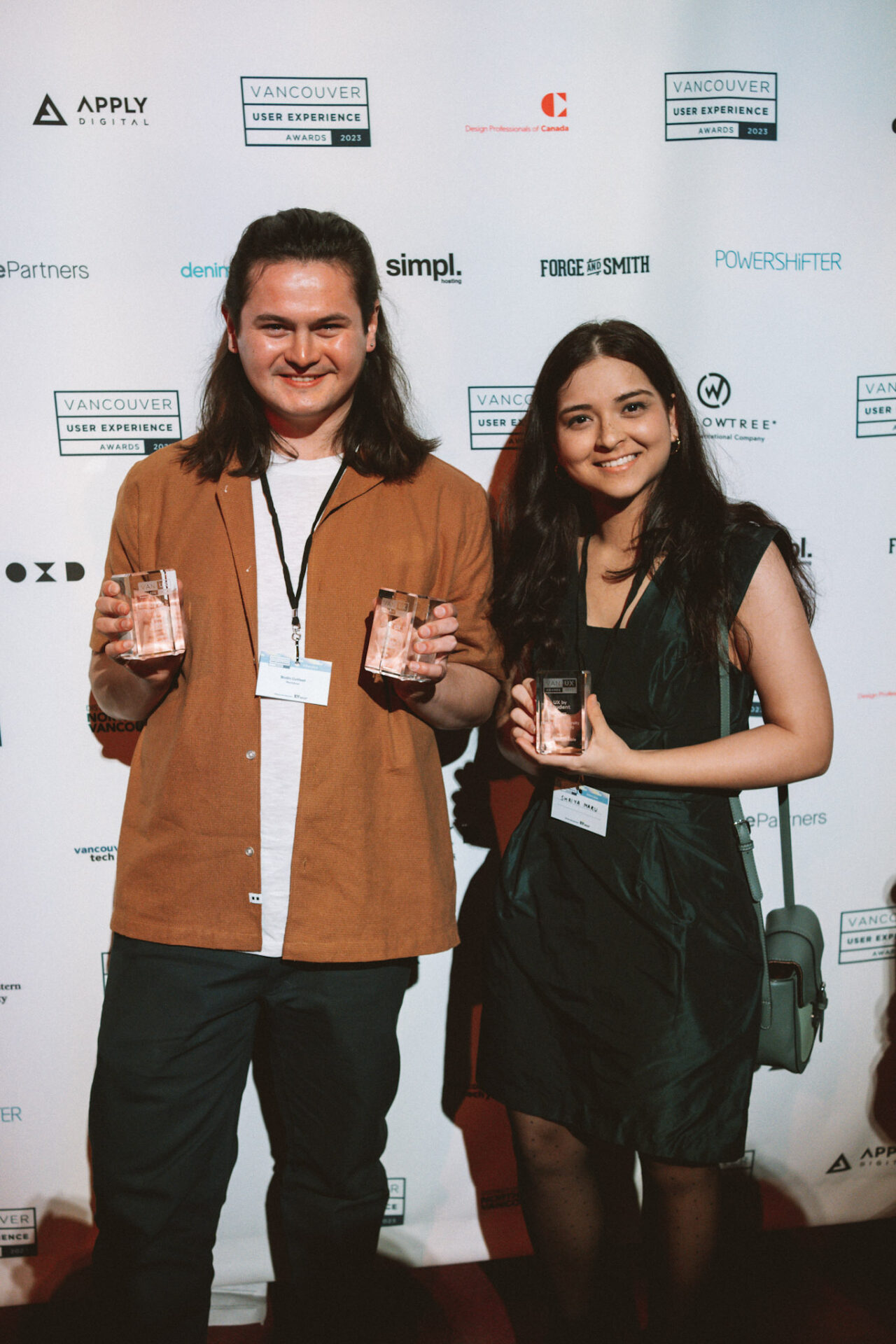
Nodin Cutfeet (L) and fellow award recipient (and ECU student) Shriya Maru show off their awards at the 2023 Vancouver UX Award ceremony. (Photo courtesy Shriya Maru)
Waniskâw began as Nodin’s capstone project during his final year at ECU. It was partly inspired by his experience with design tools such as Adobe XD and Illustrator. Nodin says the complexity of these programs can be overwhelming. Consequently, many users compromise on a desired effect rather than pushing to understand how to achieve it.
Waniskâw aims to change that. With a focus on pixel art and vector graphics, the platform helps young learners understand the relationship between coding and visual artwork. In doing so, Nodin says they’ll never feel the need to compromise on a project.
“Showing them the dramatic effects that are possible before they learn these overly complex tools encourages them to dive deeper and get a little more experimental with the effects in their work,” he tells me via video chat from his home in Victoria. “When they finally do hop into Photoshop or Illustrator, they’ll be more curious about how to achieve the effects they’ve already seen are possible.”
But Nodin also designed Waniskâw to address equity gaps in rural Indigenous access to arts and technology resources. He created a mobile-friendly interface to avoid the need for pricey desktop or laptop computers. Pixel and vector file sizes are small enough to load quickly even on shaky internet connections. And they can be created easily without an expensive drawing tablet.
An example of the pixel-art user interface from Nodin Cutfeet's Waniskâw platform. (Image courtesy Nodin Cutfeet)
Considering the specific learning needs of rural Indigenous youth was also crucial to Nodin. Waniskâw users can share coding solutions with each other, allowing for asynchronous peer support. Meanwhile, formal tutorials would occur during summer camps and workshops led by organizations already engaging with Indigenous youth. And importantly, these tutorials would not take place in the context of schools.
“I don’t think youth are going to want to spend more time than they have to on their school grounds,” he says. “I feel like that’s a need that anyone who works with rural Indigenous youth sees and knows needs to be met.”
Nor does the app employ exploitative microtransactions or advertisements. Instead, Nodin is working on funding the project through grants and partnerships. He notes he has been in conversation with local Indigenous tech development company Animikii toward this end.
All of this amounts to a bid to empower Waniskâw’s users. The name, Nodin notes, comes from a Cree word for “awakening.” The specific form, however, is more akin to “getting out of bed.”
“When designing it, I was thinking about what I could create that would give youth who live in rural communities a reason to get out of bed,” he says. “When their entire community is 37 houses and a grocery store, what do they have to do? What do they have to look forward to that day other than Instagram and YouTube?
“So, I decided to create something they’d want to get up and keep working away at. That’s why I thought it was a little cheeky and a little fun to use the ‘get out of bed’ form of awakening.”

An example of the coding UI from Nodin Cutfeet's Waniskâw platform. (Image courtesy Nodin Cutfeet)
It also brings Nodin’s personal relationship with technology full circle. In third grade, he started “playing with simple circuits.” It brought him hours of joy and entertainment. In eighth grade, he taught himself the Python programming language. His work with those tools ultimately led him to Waniskâw. And he wants to share the thrill of those discoveries with others.
And while he still has a few years to go before the platform is widely available, Nodin is excited to share it.
“I hope to attract people who aren’t interested in making art or coding,” he says. “I want them to check out Waniskâw and maybe discover their passion for digital art or programming.”
Visit Waniskâw online to learn more about the platform.
--
Visit ECU online today to learn more about studying Interaction Design at Emily Carr.
